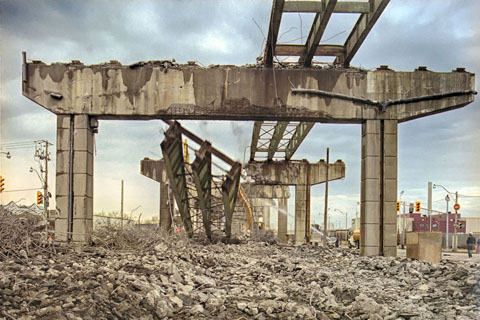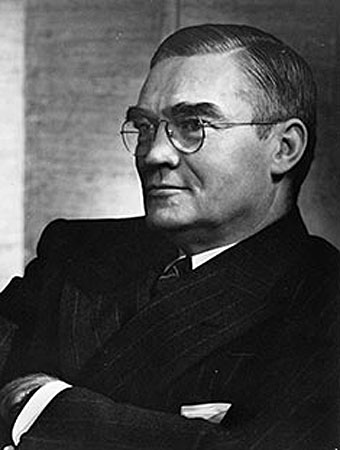This article is from our Toronto Feature series. Features from past programs are not updated.
This content is from a series created in partnership with Museum Services of the City of Toronto and Heritage Toronto. We gratefully acknowledge funding from the Ontario Ministry of Tourism, Culture and Sport, and the Department of Canadian Heritage.
"Lakefront Superhighway Named for'Big Daddy'"
Toronto loves to hate the Gardiner Expressway. Its construction meant the demolition of homes and a popular amusement park, paving over parkland and creating a long elevated barrier between the city and its lake. It was a 1950s answer to Toronto's boom, and one of the first projects undertaken by the new Metro Toronto government and the most tenacious and forceful chairman in its history, Frederick G. Gardiner, Toronto's "Big Daddy."
In eight years as the Metro Chairman (1954 to 1962), Gardiner pushed through the construction of two expressways, new municipal water and wastewater plants, expanded transit and large-scale social housing and park projects.
He was criticized for being undemocratic. "When he really wanted something, he just came and beat it out of you," said Toronto mayor Nathan Phillips. Gardiner himself said, "I don't care if I win or lose. But I win." His personal vision, strength of will, relentless energy and political acumen achieved tremendous results in a relatively short span of time.
He was a colourful big city leader and it is fitting that such an imposing, ambitious and controversial project as the Gardiner Expressway should bear his name.

 Share on Facebook
Share on Facebook Share on X
Share on X Share by Email
Share by Email Share on Google Classroom
Share on Google Classroom




